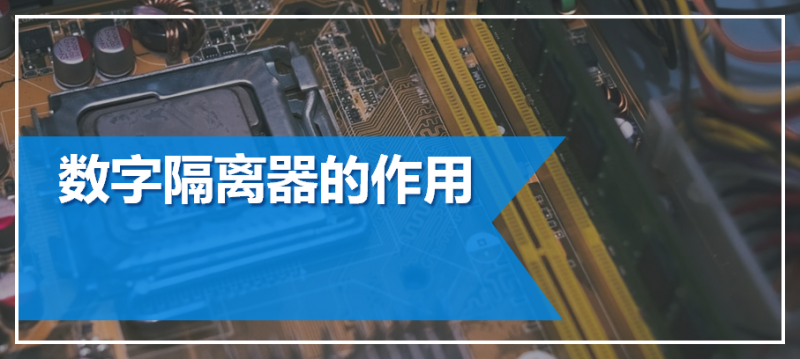Digital isolators are designed to reduce noise from ground loops, and galvanic isolation ensures that data transmission is not through electrical connections or leakage paths, thus avoiding safety risks.
A digital isolator is a chip that has high resistance isolation characteristics when digital signals and analog signals are transmitted in an electronic system to achieve isolation between the electronic system and the user. Designers introduce isolation to meet safety regulations or to reduce ground loop noise, for example. Galvanic isolation ensures that data transmission is not through electrical connections or leakage paths, thus avoiding safety risks. However, isolation imposes constraints on latency, power consumption, cost, and size. The goal of digital isolators is to meet safety requirements while minimizing adverse effects.

Critical Isolation Specifications
Before choosing the right digital isolator, key isolation specifications should be understood. It is important for the designer to understand the isolation specification requirements of the system application. Only by knowing the required isolation requirements can the designer know the isolator How much protection can be provided to the system, eg what is the maximum voltage the isolator can withstand? High voltage isolation performance of digital isolators such as maximum transient isolation voltage (VIOTM), maximum isolation voltage (VISO), maximum surge isolation voltage (VIOSM), maximum repetitive peak isolation voltage (VIORM), maximum working isolation voltage (VIOWM) , Common Mode Transient Immunity (CMTI). These parameters represent the ability of a digital isolator to handle high voltages. Different sizes of withstand voltage and transient response are the criteria for selecting an isolator.
Maximum Transient Isolation Voltage (VIOTM): Specified in IEC 60747-5-5 and VDE 0884-11: The isolator can handle peak transient voltages for up to 60 seconds without failure. An arc or load change on the system power supply can cause disturbances, and the voltage may briefly become several times the line voltage. The isolator must be able to handle these overvoltages without damage.
Maximum Isolation Voltage (VISO): Similar to VIOTM, according to UL 1577, the isolation withstand voltage is defined as the root mean square (rms) value of the voltage at which the isolator will not break down for 60 seconds, the difference between the voltages being the peak value.
Maximum Surge Isolation Voltage (VIOSM): The ability of an isolator to withstand extremely high voltage pulses of a specified transient voltage. The waveform is shown in Figure 2. This parameter represents direct and indirect surge shocks. According to IEC 60747-5-5 and VDE 0884-11, an isolator with a maximum surge isolation voltage VIOSM must pass a surge test at a peak voltage of 1.3 times VIOSM for basic isolation, and 1.6 times VIOSM for reinforced isolation . Digital isolators can be called component-level reinforced when they pass surge tests above 10kV.
Maximum Repetitive Peak Isolation Voltage (VIORM): Defined in IEC 60747-5-5 and VDE 0884-11 as the maximum repetitive peak voltage that an isolator can withstand. The purpose of this specification is to characterize the isolation voltage of an isolator on a daily basis.
Maximum Working Isolation Voltage (VIOWM): Similar to the maximum repetitive peak voltage, the working voltage is the maximum rms value, or the equivalent DC voltage, that the isolator can withstand over the specified long life. Again, the difference is the value in rms, not the peak voltage. Common Mode Transient Immunity (CMTI): Common Mode Transient Immunity refers to the ability of an isolator to withstand high slew rate voltage transients between its two grounds without damaging the signal passing through it, which may will cause signal transmission errors. In some applications, these signal errors caused by transients can lead to short circuit events. A higher CMTI indicates that the isolated channel is more reliable. Additional explanations of these isolation parameters can be found in Definition and Test Methods for High Voltage Reinforced Isolation. The aforementioned isolation certification ensures that your application conforms to global industry standards.

